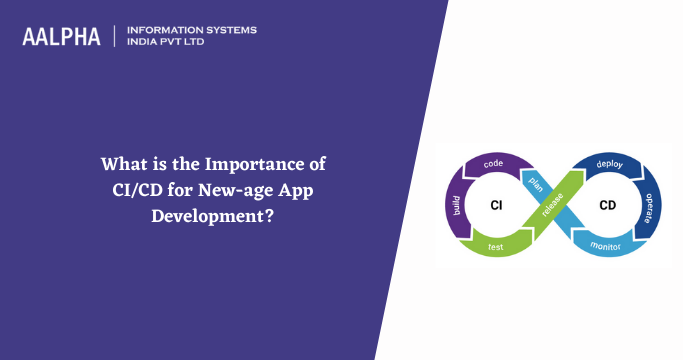Continuing integration (CI) and continuous delivery (CD) are identical in words that include culture, a set of operational principles, and a collection of techniques that make code changes more often and reliably available to application development teams. The implementation is often referred to as the continuous integration/continuous delivery pipeline.
Continuous integration and delivery are one of the most acceptable practices for DevOps teams to adopt. Additionally, it is an agile methodology best practice since it allows software development teams to concentrate on business objectives, code quality, and security by automating deployment processes.
What does CI/CD mean?
CI/CD is a software development method that combines the development and operations teams. It automates the development, testing, and deployment of apps.
It streamlines the deployment process, provides structure to the codebase and development process, and allows for more frequent updates with less downtime.
While CI/CD is frequently referred to as a single method, it is essential to recognize two distinct quality control approaches. Here’s a quick summary of both concepts:
Continuous integration (CI) is a technique of software development where teams often merge code into one repository.
Early detection and resolution of problems allow teams to speed up release cycles.
With continuous integration, everyone knows what is going on in the codebase and what features are created for end-users.
Continuous Delivery (CD) is the practice of rapidly delivering updates, fixes, features, and configuration changes into production or end-user hands.
The goal is to streamline the delivery/deployment process to perform predictable tasks on demand.
CD combines integration and testing to ensure that code is always deployable, even when developers update the source.
Benefits of CI/CD for App Development
The following sections will examine the commercial benefit of CI/CD from a variety of perspectives.
CI/CD allows businesses to adapt to changing customer demands.
Teams have the freedom to update existing applications and develop and deploy new ones in response to growing trends, new markets, and changing expectations. The deployment of CI/CD begins early in the production phase by immediately making key functionality accessible to end-users. In this manner, early feedback and usability problems may be handled without requiring extensive, time-consuming refactoring later.”
CI/CD enables customer results, technically
One of the major advantages of CI/CD is that it enables companies to provide their clients a consistent service. When a new product is launched, companies typically track and record user behavior and seek feedback. So that software bugs and usability issues don’t go unnoticed and permanently damage the product’s (or company’s) reputation.
Regular updates, new features, quick feedback responses, and bug fixes contribute to customer satisfaction and long-term loyalty. Businesses may utilize CI/CD to enhance applications and user experiences while minimizing downtime continuously.
Increases the efficiency of DevOps
Daily service interruptions, outages, and unsuccessful deployments may endanger developers’ and engineers’ jobs without CI/CD.
In addition to reducing human labor, CI/CD may help teams avoid code errors and identify problems before release. CI/CD may improve release rates by reducing time spent finding and addressing problems. Companies may also handle many releases if they use an automated testing process.
Teams may also utilize CI/CD to automate code merges, testing, and deployments to multiple production environments, ensuring code is always release-ready.
CI/CD Enhances the App’s Quality
One of the major challenges of companies is to sacrifice quality for speed when adopting CI/CD.
Businesses no longer must pick between quality and speed. But also allows developers and operations teams to work closely together, allowing problems to be identified and handled faster and earlier in the development lifecycle.
CI/business CD allows development, operations, and quality assurance to focus on their respective strengths. Developers may spend more time on real-world problems than worrying about production concerns.
CI/CD also helps businesses maintain quality requirements as their applications expand. Applications with many features may grow too big to perform code reviews, resulting in quality deterioration.
Contributes to the development of cloud-based applications
The growth of CI/CD is partly a result of the increased use of cloud computing. Technically, you could create cloud-based apps using conventional development methods, but this is not feasible.
If you install cloud software in the same way as conventional on-premises solutions, you will lose out on some of the cloud’s advantages, such as automation and tools (APIs and CLIs).
Scalability, elasticity, and better performance are all characteristics of cloud-native apps enabled by CI/CD.
Reduce Costs and Increase Profitability
CI/CD also helps the bottom line. It standardizes deployment processes across all projects and enables teams to test each source code change methodically.
As a result, fewer faults or errors may slip through the cracks and cause future problems. It can save much money by eliminating many of the costs involved with creating and testing code changes.
Teams spend less time testing and resolving problems, saving businesses money on non-value-added tasks.
To know more about CI/CD for app development, feel free to our DevOps consulting company!
